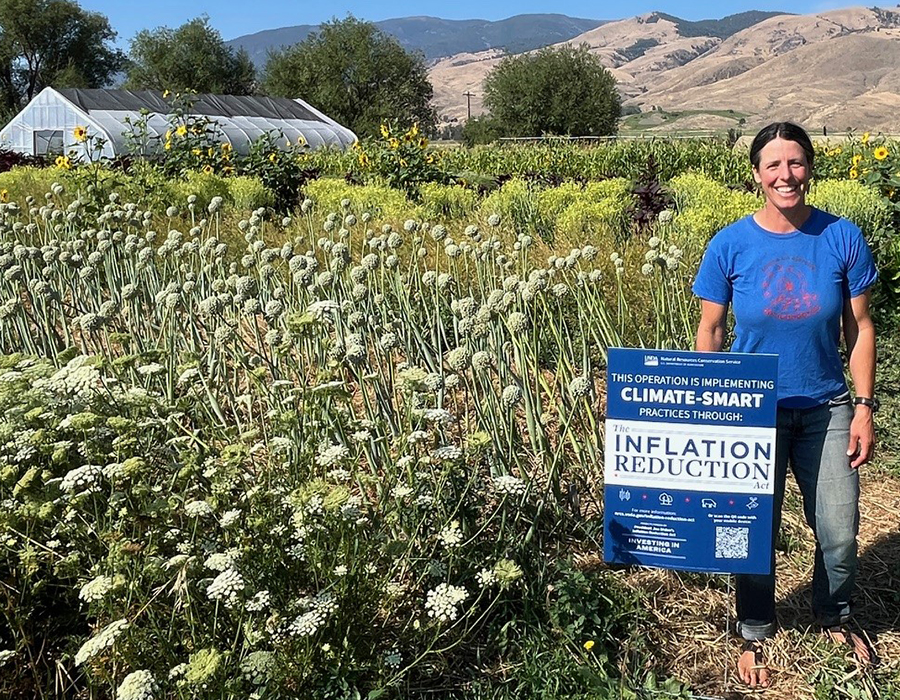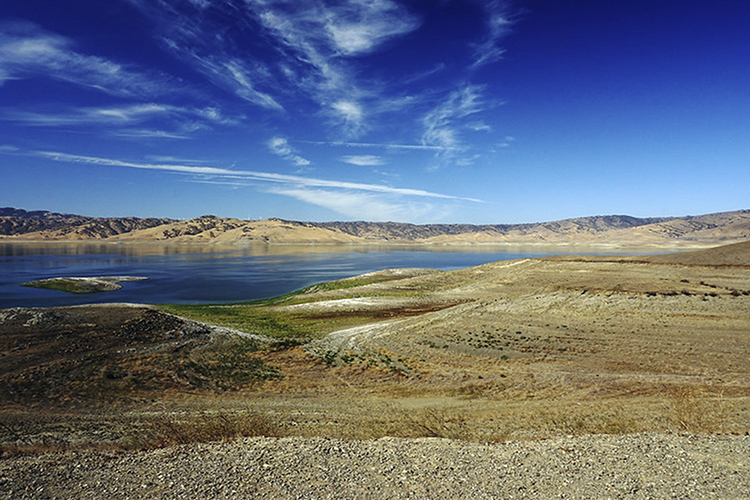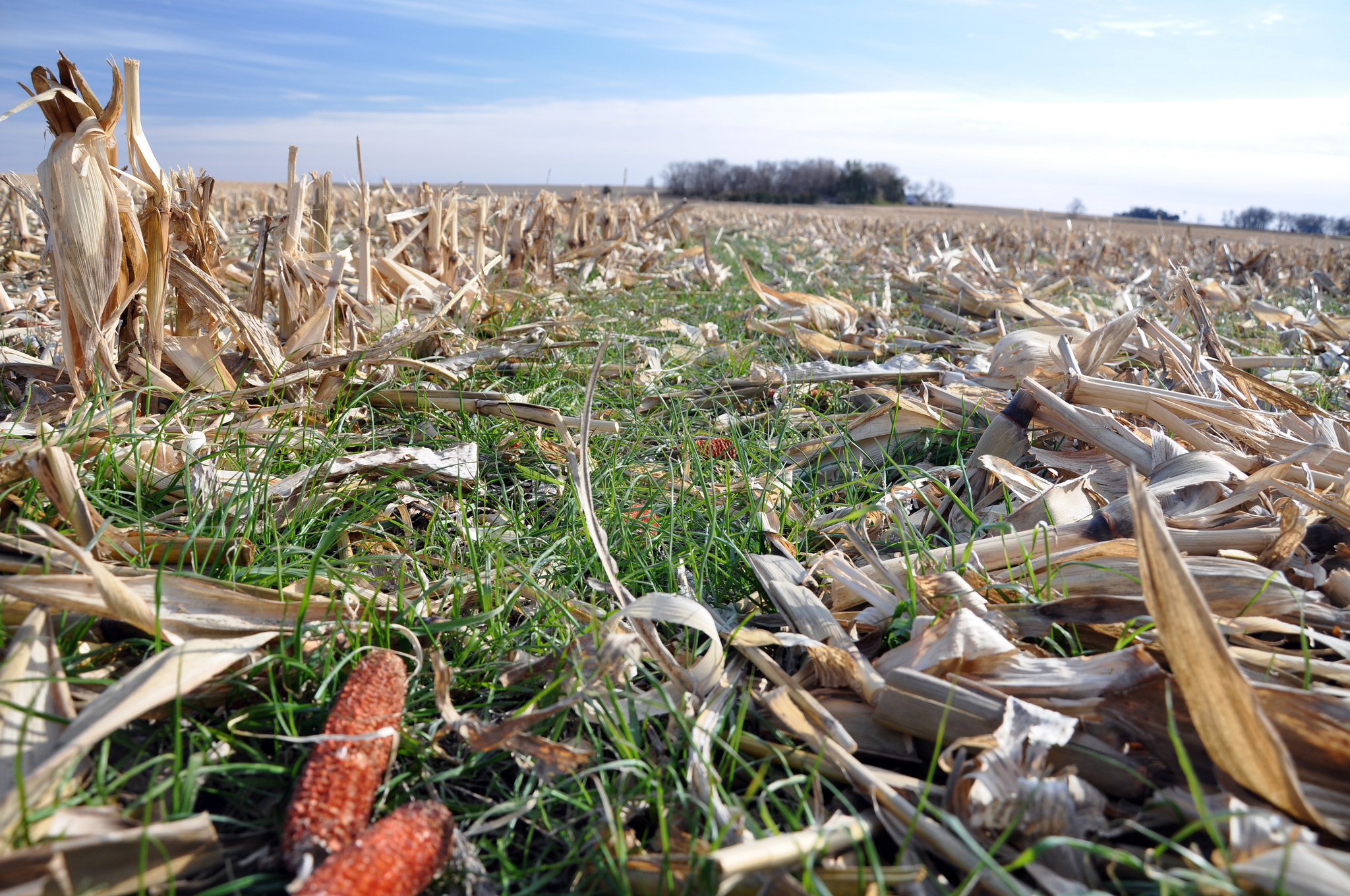Effective beginning 5/20/2025: Please note this site is under review and content may change.
Are you interested in climate-smart solutions for your agricultural or forestry operation? USDA offers voluntary programs and services to help you build soil health, sequester carbon, reduce greenhouse gas emissions, enhance productivity and commodity marketability, and mitigate the impacts of climate change while building resilience to strengthen your operation.
On This Page
Climate-Smart Agriculture and Forestry for Your Operation
As farmers and ranchers confront the challenges of natural disasters and changing weather patterns, climate-smart agriculture is becoming an important way to build resilience in operations in ways that benefit both producers and the environment.
The main goals of climate-smart agriculture are to:
- Increase or maintain productivity and yield.
- Enhance resilience to environmental changes.
- Reduce greenhouse gas emissions.
Climate-smart agriculture does not necessarily define new farming practices. It includes and builds upon many practices that farmers and ranchers already use, like cover cropping, nutrient management, and conservation tillage. Advancing these practices with the goal of adapting to the current climate or preventing any potential impacts to it, is what makes them “climate-smart.”
USDA offers financial assistance and one-on-one technical advice through a suite of voluntary programs to directly support farmers, ranchers, private forest landowners, and partners in implementing climate-smart management solutions.
Conservation Programs, Grants, and Partnership Opportunities
Agricultural Conservation Easement Program
The Agricultural Conservation Easement Program (ACEP) helps landowners and other entities protect, restore, and enhance wetlands, grasslands, and working farms and ranches through conservation easements. ACEP is available through USDA’s Natural Resources Conservation Service (NRCS).
Easements can be leveraged to keep agricultural land in production, thereby maintaining carbon sequestration benefits over time. Easements may also be used to restore and enhance wetlands, which sequester carbon and contribute to climate resiliency.
Conservation Stewardship Program
The Conservation Stewardship Program (CSP) offers technical and financial assistance to help agricultural and forest producers take existing conservation efforts to the next level. Through this program, NRCS provides opportunities for producers to apply conservation practices across their entire operation through a five-year contract.
If you’ve already pursued conservation across your working land and would like to do more, CSP could deliver new opportunities to apply climate-smart practices.
Conservation Reserve Program
The Conservation Reserve Program (CRP) provides rental payments and cost-share assistance for agricultural producers to put environmentally sensitive land into 10-15 year contracts to plant resource-conserving plant species that control soil erosion, improve water quality, develop wildlife habitat, and boost carbon sequestration. FSA updated CRP in 2021 to include a Climate-Smart Practice Incentive as well as invested in monitoring, assessment and evaluation of the program's climate benefits.
Environmental Quality Incentives Program
The Environmental Quality Incentives Program (EQIP) provides financial and one-on-one technical assistance to implement conservation practices to meet your specific conservation and production goals.
EQIP supports climate-smart conservation practices that enable agricultural producers and land managers to sequester carbon and reduce greenhouse gas emissions across a diversity of operations while building resilience for the future.
Conservation Innovation Grants
The Conservation Innovation Grants (CIG) program drives public and private sector innovation in natural resource conservation through projects that address our nation’s water quality, air quality, soil health, and wildlife habitat challenges, all while improving agricultural operations and delivering climate solutions. CIG is available through NRCS.
The CIG program has three components – CIG Classic, CIG On-Farm Conservation Innovation Trials, and state-level CIG.
Regional Conservation Partnership Program
Through the Regional Conservation Partnership Program (RCPP), conservation partners work in collaboration with NRCS to help farmers, ranchers, and forest landowners implement systems that conserve water and soil resources, improve the health of wildlife habitats, and increase climate resilience.
Partners apply for RCPP projects through NRCS, then producers, landowners, and partners sign contracts to carry out conservation activities.
Farm Loans to Finance Climate-Smart Practices or Equipment
USDA's Farm Service Agency (FSA) offers loans to help farmers and ranchers start, expand, or maintain family agricultural operations that can be used to finance the implementation of climate-smart agricultural practices or to purchase related equipment for your operation.
Farm Ownership Loans
Farm ownership loans can be used to purchase or expand your farm or ranch. They can help with paying closing costs, constructing or improving buildings on the farm, or to help conserve and protect soil and water resources. FSA offers up to $600,000 for eligible borrowers through farm ownership loans.
These loans can assist with larger-scale improvements to make an operation more climate-smart.
Farm Operating Loans
Farm operating loans can be used to purchase livestock, seed and equipment. It can also cover farm operating costs and family living expenses while a farm gets up and running. FSA offers up to $400,000 for eligible borrowers through farm operating loans.
These loans can assist with the implementation of climate-smart agriculture practices or the purchase/expansion of an operation implementing climate-smart practices.
Microloan and EZ Guarantee Loans
Microloans and EZ Guarantee Loans can be used for small-scale climate-smart investments or a source of funding for small or beginning farmers and ranchers.
Microloans are direct farm operating or ownership loans with a shortened application process and reduced paperwork for loan amounts up to $50,000. EZ Guarantee Loans guarantees streamlined loans of up to $100,000 for farm operating or ownership.
Guaranteed Conservation Loans
FSA guarantees conservation loans of up to $2,037,000 to implement techniques that will conserve natural resources. The loans are available from lenders working with FSA and funds can be used to implement conservation approved by NRCS. Many conservation practices also help producers build more climate resilient landscapes.
Emergency Loans
Emergency loans help farmers and ranchers recover from production and physical losses due to drought, flooding, or other natural disasters. The program is triggered when a natural disaster is designated by the Secretary of Agriculture, or a natural disaster or emergency is declared by the President.
Farm Storage Facility Loans
Farm storage facility loans provide low-interest financing for producers to build or upgrade various storage facilities for eligible commodities. Loan terms span 3 to 12 years. The maximum loan amount for storage facilities is $500,000; storage and handling trucks can be financed up to $100,000.
Example Uses of Farm Loan Programs for Climate-Smart Practices
The table below provides examples of how producers could use FSA farm loans to finance climate-smart agriculture practices or equipment. This table is not exhaustive of all climate-smart agriculture practices and equipment for which FSA loans could be used.
| Climate-Smart Practice or Equipment | Potential Use of Farm Loan Program |
|---|---|
| Cover Crops | Annual Operating Loan for seed costs or Term Operating Loan for specialized equipment |
| Precision Agriculture Equipment | Term Operating Loan to purchase equipment (e.g., GPS globes, monitors, strip till fertilizer equipment) |
| No/Reduced Till | Term Operating Loan to purchase equipment |
| Livestock Facility Air Scrubber or Waste Treatment | Farm Ownership Loan for capital improvements to livestock facilities |
| Cross Fencing | Annual or Term Operating Loan to purchase fencing and/or installation equipment |
Learn more about how climate-smart agriculture can benefit producers and the environment in our Climate-Smart Agriculture and Farm Loan Programs Fact Sheet.
Other Programs to Support Climate-Smart Agriculture
Transition to Organic Partnership Program
The Agricultural Marketing Service’s Transition to Organic Partnership Program (TOPP) is building partnership networks in six regions across the United States to provide farmer training, education, and outreach activities. Many organic farming activities also build climate resilience and mitigate greenhouse gas emissions.
Rural Energy for America Program
The Rural Energy for America Program (REAP) provides guaranteed loan financing and grant funding to agricultural producers and rural small businesses for renewable energy systems or to make energy efficiency improvements. Agricultural producers may also apply for new, energy efficient equipment and new system loans for agricultural production and processing.
Getting Assistance
USDA Service Centers are staffed with conservation experts ready to provide custom, one-on-one support based on your specific climate-smart management and production goals. Through Conservation Technical Assistance (CTA), NRCS offers targeted advice and information – based on the latest science and research – to help producers make informed decisions. This support is offered at no cost to producers.
Contact your local USDA Service Center to learn more about programs and services to support climate-smart solutions for your working land. Visit our Important Dates page for more information on application deadlines and state ranking dates.
Climate-Smart Agriculture and Nutrient Management
Nutrient management is an important part of climate-smart agriculture. Excess nutrients on the land can lead to nitrogen losses to the atmosphere. Nutrient management maximizes crop-nitrogen uptake and has a compelling and cost-effective role to play in mitigating greenhouse gas emissions from agriculture.
Partnerships for Climate-Smart Commodities
USDA's Partnerships for Climate-Smart Commodities is investing more than $3.1 billion for 141 projects that:
- Provide technical and financial assistance to producers to implement climate-smart production practices on a voluntary basis on working lands.
- Pilot innovative and cost-effective methods for quantification, monitoring, reporting and verification of greenhouse gas benefits.
- Develop markets and promote the resulting climate-smart commodities.
Learn About Projects in Each State on the Climate-Smart Commodities Project Dashboard
Disaster Protection and Recovery
Farmers, ranchers, and forest landowners experience the impacts of climate change through shifting weather patterns and increasingly frequent and severe storms, floods, drought, and wildfire. At USDA, we offer a suite of programs to help offset losses as well as crop insurance and other coverage options to help manage risk and provide a safety net for your operation.
Disaster Assistance Resources
Learn about USDA disaster assistance programs that might be right for you by completing five simple steps.
USDA provides a suite of disaster assistance programs to help offset losses as well as crop insurance and other coverage options to help manage risk and provide a safety net for your operation.
USDA's Risk Management Agency supports conservation-minded farmers and ranchers by creating new and improving insurance options for producers.
Interactive Climate and Conservation Tools
Learn about different types of conservation issues that might impact the productivity or natural resources on your farm, ranch, or forest land.
Access a digital carbon and greenhouse gas accounting system to quantify your operation’s carbon sequestration and greenhouse gas emission reduction potentials based on multiple management scenarios.
Access a digital carbon sequestration and greenhouse gas mitigation evaluation tool specific to conservation practices implemented through NRCS.
Access tools and webinars for responding to or preparing for climate-related events that may impact your operation, assess risk and vulnerability, and inform decision making.
Leverage decision tools to manage risks such as a cover crop planting scheduler, water deficit calculator, and county climate change trackers. This program primarily focuses on the Northeast region, but general tools can be applied in additional locations.
The University of Nebraska National Drought Mitigation Center develops and maintains the U.S. drought monitor, a planning tool for ranchers, and other resources.
Climate Resources
Find state- and county-level information about key changes in historical and projected climate that can impact agricultural production, compiled by the USDA Climate Hubs.
View the latest USDA updates to support informed, science-based decisions that mitigate the impacts of climate change and build climate resilience across working lands.
Iowa State’s Extension webpage highlights carbon sequestration, how to manage related practices, and the benefits of sequestrating carbon.
The Adaptation Workbook assists producers in identifying strategies and approaches for managing their potential climate impacts and preparing for changing climate conditions.
Select your state to access a description of the historical climate conditions and future projections via the National Oceanic and Atmospheric Administration’s State Climate Summaries.
Conservation Resources
Watch 90-second videos to learn about conservation practices available through NRCS, including those that support climate-smart agriculture and forestry.
See state-level application ranking dates for the Environmental Quality Incentives Program, Conservation Stewardship Program, Agricultural Conservation Easement Program, and Agricultural Management Assistance.
Find live and on-demand virtual events and webinars focused on forestry, agriculture, conservation, climate science and other natural resource topics.
Fact Sheets and Reports Related to Climate Smart Agriculture
- Climate-Smart Agriculture and Forestry
- Climate-Smart Opportunities for Urban and Small-Scale Producers and Communities
- Climate-Smart Agriculture and Forestry (CSAF) Mitigation Activities List
- Conservation Programs At-a-Glance
- USDA Climate-Smart Agriculture and Forestry Strategy
- USDA Action Plan for Climate Adaptation and Resilience
Find Your Local Service Center
USDA Service Centers are locations where you can connect with Farm Service Agency, Natural Resources Conservation Service, or Rural Development employees for your business needs. Enter your state and county below to find your local service center and agency offices. If this locator does not work in your browser, please visit offices.usda.gov.
Learn more about our Urban Service Centers.
Visit the Risk Management Agency website to find a regional or compliance office or to find an insurance agent near you.









